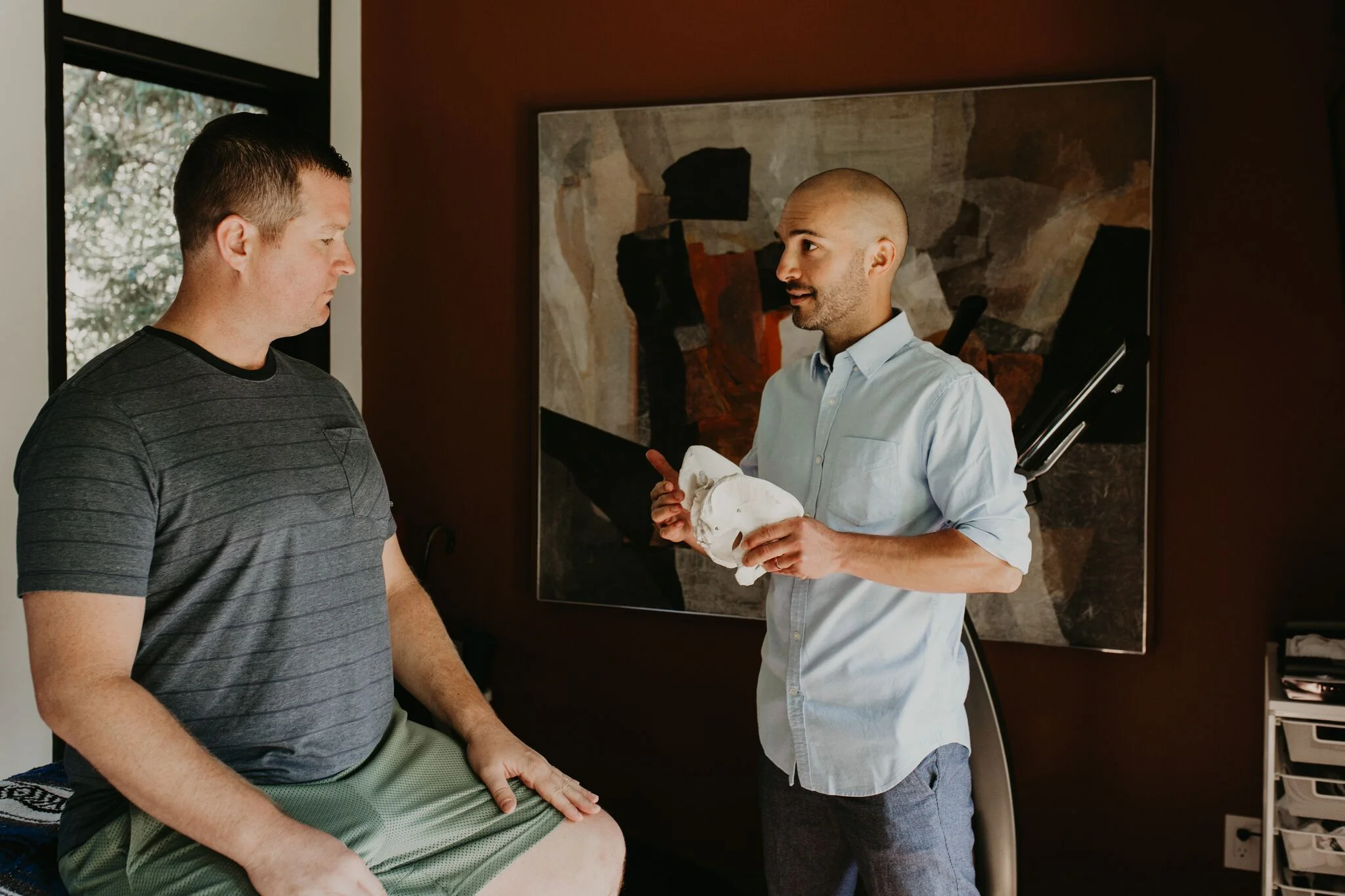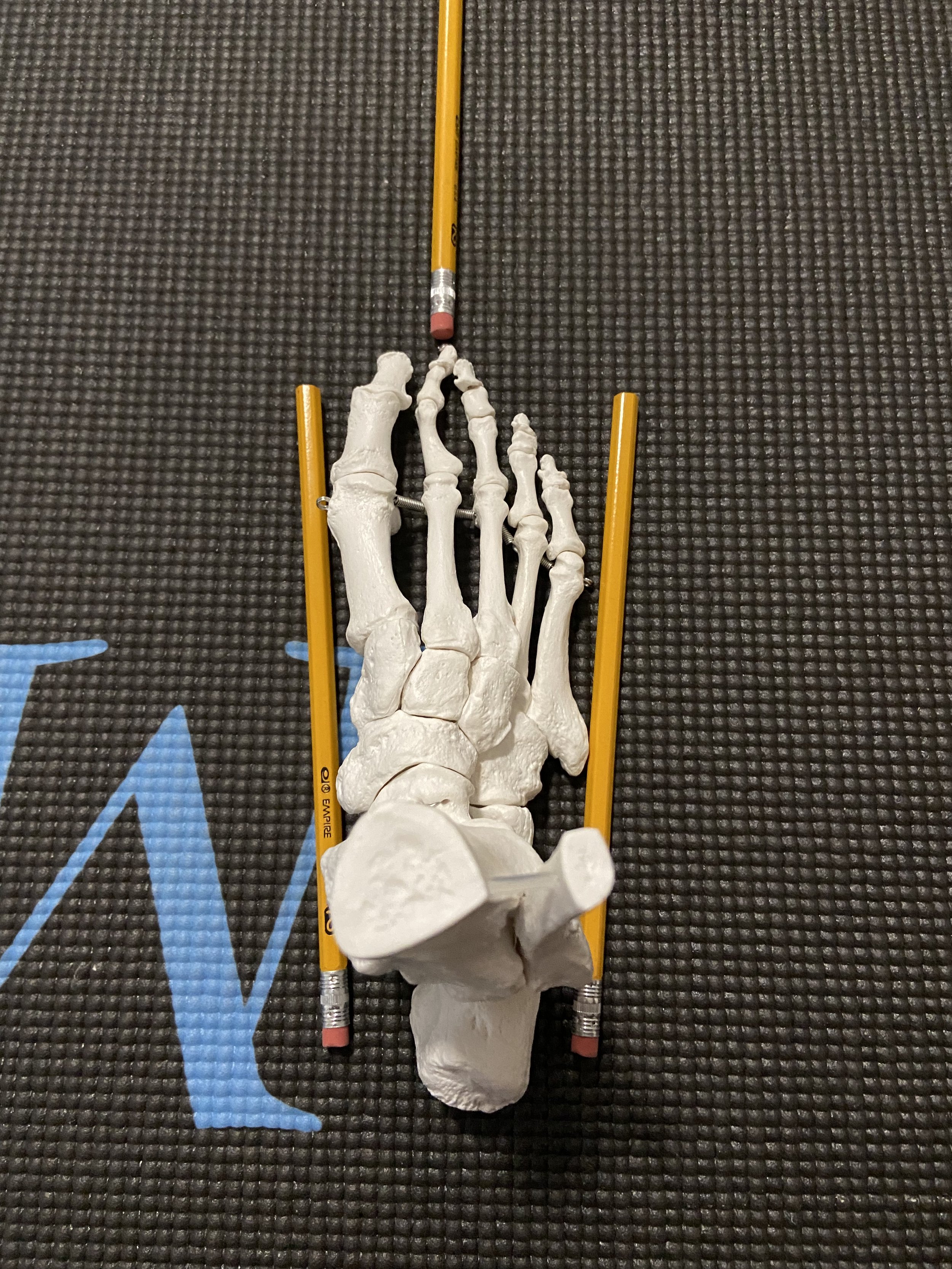Allow me to blow your mind for a moment - your feet are (usually) the only part(s) of your body that are contacting the ground. If this were your home we’d call that the foundation. And like the foundations of our homes, our feet are both incredibly important and completely overlooked. But as the (typically) only contact points with the ground, they serve as the first and primary defense for the entire body against the constant strain that is gravity. They are the tone-setters. They are your core. This article is a brief, introductory guide to help you strengthen your feet, improve your alignment and posture, and lay a stable foundation for many of life’s fundamental movements so your entire body can remain happy and healthy for the long haul!
A quick preface about this article:
I realize that many of the points I bring up in this article would be easier to understand and perform if seen as opposed to read. So I created a 16-minute YouTube video to supplement the content here. (I know that’s probably a little on the long side but I wanted to be comprehensive and I have it broken into easy-to-find sections so you can skip around if you like)
Obviously we are incredibly dynamic creatures, so in no way do I want the following to give the impression that we should be holding ourselves in one position all day long. We are meant to move. However, two points about that with respect to this post:
One: I think it’s very valuable to understand the fundamentals of how our body best operates. It falls under the category of “you’ve got to know the rules before you can break the rules.”
Two: what I layout in this post actually covers a lot of life. Meaning standing in place (static standing), components of walking, and squatting (which, as you may or may not realize, we actually do many, many times per day).
Step A: Alignment & Arch Activation
I am no architect, but I would argue that the two most important aspects of the foundation of our home is that it is level and adequately stable. I would also argue that the two complement each other - meaning the more level, the more stable. How this translates to the body: the feet are in a neutral and aligned position, and the muscles that lift the arches of the foot (yes, arches, as in plural) are adequately engaged.
Location of the hip joints, aligned with the feet
Neutral and aligned:
The feet are in line with your hip joints, which are in the middle of your groin, not at the sides of your hips (see picture). Though ideally the shin bone (tibia), knees and fronts of the thighs all fall in line with the hips and feet and face directly forward, that is not always the case. You may find that your knees bow outward, which typically correlates to more weight on the outside of the foot. Or, that your knees angle and rotate inward, which is almost always associated with the feet turning outward and fallen arches. And though your lower half may not be in a perfectly straight line after reading this article, it’s important to both be aware of our tendencies and have tools to start to come back towards the opposite direction. Because gravity never slows down or takes a break.
If you look down at your feet (without shoes on), you’ll notice they’re somewhat triangular - isosceles to be exact (yes, I had to look that up) - meaning the heel is narrower than the far end of the foot (“ball of the foot” or “forefoot”) with the inner and outer borders (heel to base of big toe and little toe, respectively) being roughly the same length. So to have “aligned” or “parallel” feet is to have the heels in line with the middle of the forefeet and those inner and outer borders are pointed equally outward from an imaginary line pointing directly straight forward from you. Confused? You can also usually use the second toe as your guide - if it’s pointing directly straight forward then your feet are typically parallel (see picture below).
Arch activation:
When it comes to bearing our weight, many people have heard the analogy of our feet to tripods, with the heel bone, ball of the big toe (AKA BOBT & first metatarsal head), and ball of little toe (BOLT) being the three points. But what people don’t often think about is that because of those main points of contact, we actually have three arches. And a good way to engage off of those arch lifting muscles is to work each of those three points into the ground AND lift every other part of your foot up away from the ground as much as you can (side note: this is one of many examples of how the ground is an amazing feedback and tuning mechanism resource for our body). This can be facilitated by lifting and spreading your toes as you do so.
But though we have three arches, no doubt that one in particular (known as the Medial Longitudinal Arch) gets all the press, and deservedly so. To lift and engage this arch I think it is particularly helpful to visualize two specific points of our anatomy: the aforementioned BOBT and a small bony prominence below the inside ankle bone (medial malleolus) that I refer to as the Bump of the Navicular (BUN). We want the BOBT to stay grounded (I also like to refer to it as The Anchor of our foot), and pull downward (towards the heel) and inward towards the other foot. And we want the BUN to work outward (away from the other foot) and upward (towards the ankle). The YouTube Video should particularly help with this aspect as I use both a foot model and myself to facilitate visualization.
Step B: Balance
The triangular shape of the foot
If I had a three-month sabbatical in a remote, faraway land, I quite possibly would write a 1000-page manuscript on balance. To me, it’s an incredibly vast and fascinating topic. But I don’t, nor would you want to read it. So here are a few quick points for you to consider when thinking about balance:
Balance is involved in, and thus affects the quality of, EVERYTHING that we do.
When many people think about balance, they think about not-falling. Which, I’d argue, is the bottom bar. The highest bar, which is the one I’d encourage us all to strive for, is our ability to put all of our parts where we want them to be, as often as possible. Meaning: maintain alignment. Now alignment can look like many, many things depending on what we are trying to do. But to simplify and related it to something we do a lot of, walking, I’d suggest starting with seeing if you can stand on one foot while:
Keeping the pressure on each point of the tripod mostly equally, with a slight bias towards the heel and the BOBT.
Remain every bit aligned as you are on two feet. You can think about this a couple of ways:
Shoulder stay in line with hips
We remain the same height as we are on two feet.
To practice this, I suggest The Slow March (again, see video) to simulate the weight transfers of walking.
One component of balance that is rarely considered and, thus, trained is our vestibular system (our inner ear), which can be thought of as our internal level. When our head moves in any direction (up/down, side to side, rotation, or any combination of the three), that internal level has to quickly and accurately adjust. But like most things involving our body, the functionality and speed of the vestibular system decreases with time and/or disuse. So I think it’s particularly important to continue to train this system, and in the video you’ll find an introductory way to involve the system with balance training. And I demonstrate a couple of introductory ways to do this in the YouTube Video.
Step C: (Motor) Control
So that 1000-page balance manuscript that I said I’d write… well that would be one section in the motor control manuscript…
But to simplify the topic, we can boil motor control down to:
Static control: meaning keep the body part(s) still and where you want them while other body parts either do or don’t move, depending on what you’re doing. Confused? Check it out:
Standing still or doing a plank are both entire body static control tasks
While something like a bird/dog exercise is asking for static control only of your core/lower back.
Dynamic control: meaning to move the body parts with as close to the desired speed, direction, force, etc. as possible.
Example: anything anyone does that looks good and/or works well. Dancing, running, swinging a golf club all come to mind as tasks that require dynamic control of pretty much the entire body to look good/work well.
So now you can see why balance is a component of motor control. But in addition to walking, I would like to direct our attention to the foot’s involvement in another task we do many, many times per day, in one form or another: a squat. The bullets:
By “squat”, I mean any time our knees bend forward, whether we are on two feet (think sitting in/standing from a chair, picking something up, etc.) or one foot (think stairs, hills, etc.).
What tends to happen when we do this: our foot moves too much and our ankle moves too little. Our foot tends to turn outward and/or the (main) arch collapses downward. The foot’s ability to statically control our posture (along with our attention) is less than our ankle is stiff.
What do we do? In the video I break down a short three-part sequence aimed at improving this. The first part we already talked about: activating the arch. The second part isolates the two elements we’re wanting to improve (foot static control and ankle stiffness). And the third part is practicing the thing (squat) with the appropriate intentions and constraints.
And there we have it! As I mentioned above, this article (and accompanying YouTube Video) is in no way a comprehensive guide to foot strength, knee health, etc., rather it’s an introduction into positions, mechanics and muscular demands. If you’ve made it this far, I’m grateful and I hope you’ve gained at least a useful tool or two! And if nothing else, just having a little more awareness can make a huge difference!






